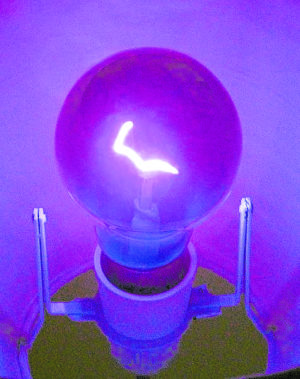Fighting disease the digital way
Could technology be the ultimate weapon that would kill the COVID-19 virus?
No one knows for sure, but digital advancements have certainly proved useful in our battle against the deadly disease. Disinfecting machines, ultraviolet-C lamps and other modern marvels allow us to eliminate invisible pathogens in the environment. Data tracking and contact tracing apps help us identify and protect vulnerable groups. These machines limit our risk of exposure while upholding our defenses.
Let us take a look at how effective technology is in containing the spread of a disease, particularly in our living environments. While the battle against COVID-19 continues, it is reassuring to think that we have non-living front-liners fighting these pathogens head on.
A light of hope

Lamps emitting ultraviolet-C rays have been proven to eliminate viruses in indoor environments but should not come into contact with humans.
Who would have thought that light would literally and figuratively brighten our chances against viruses?
While the technology of ultraviolet-C (UV) light has already been around for years, recent events have renewed interest in its development. In the past, UV products have been used to disinfect rooms in hospitals and other medical facilities. With the dawn of the COVID-19 pandemic, however, this technology is now being explored for use in offices, commercial centers and even homes.
UV-C light is naturally emitted by the sun, although the earth’s ozone filters this out before it reaches us. Unlike your usual dose of sunlight, this kind of light destroys genetic material. While it is effective in killing viruses, it is also dangerous to humans once we are directly exposed to it. So what makes this technology useful if it can actually fry us and all living creatures?
Well, provided that no humans are within range during use, UV products are actually efficient disinfectants. Money, vehicles and other objects that are usually difficult to clean can be sterilized with UV light. When shops and offices are closed for the day, UV lamps can be activated to clear interior environments of invisible pathogens.
If you’re thinking of procuring a UV-C product, however, be warned. Jim Malley, PhD, a professor of civil and environmental engineering at the University of New Hampshire, said that not all products in the market are effective. Those that sell for a bargain are often ineffective, especially when used improperly. If you’re set on purchasing one, Malley advises that you choose a device with a proven track record particularly in commercial applications.
The effectivity of UV light against COVID-19 has yet to be established, although in the past, other coronaviruses have been successfully eradicated by this technology. Provided that this innovation is properly and safely activated, UV light may soon lead the way to instant disinfection.
The silent inspector
Unless you’ve been doing quarantine earlier than March, chances are, you’ve experienced being “shot” by one of those temperature-sensing guns upon entering a building. These devices are not new to the market, but they’ve recently become popular because of the COVID-19 scares. Do these items, however, identify the COVID-19 virus?
The answer is no. According to the World Health Organization (WHO), thermal scanners do not identify COVID-19. Instead, these detect people who have a higher-than-normal body temperature. If the device determines that your skin is quite hot, you have to undergo additional procedures to confirm whether or not you are infected with a virus. The same thing goes for large-scale thermal scanners such as those found in airports and government buildings.
When using temperature sensors, keep in mind that these only identify people with fever. As there have been asymptomatic carriers of the coronavirus, these devices do not exactly identify people infected with COVID-19. These scanners, however, warn us that we may be sick and should stay at home to prevent infecting others. Despite its limitations, thermal scanners can be useful in preventing possible carriers from spreading the virus in public places.
The modern detective
Even at the beginning of the pandemic, tracking apps have proven to be useful in the fight against the virus. These help in tracing people who might have come into contact with positive carriers of the virus, and also help in correcting misinformation circulating among the public.
IT developers are at the forefront of the battle as many of their programs have proven effective in containing outbreaks. Some notable websites include the CoronaTracker, the community-based page supported by WHO, and TraceTogether, an app being promoted to limit the spread of the virus in Singapore.
While the cure for the virus is yet to be found, tracking apps are deemed essential as these record our contact history. This can help stop the spread of the virus. The trackers can also help scale testing and provide support to healthcare. Many, however, hesitate to use such apps due to data privacy concerns. In response to this apprehension, private companies and groups are often allowed to use their preferred apps to carry out contact tracing.
Digital front-liners
While technology has always been used to make our lives easier, its usefulness has never been made clearer than now. As the search for a permanent cure against COVID-19 continues, let us use modern devices responsibly to combat the virus. Despite modern approaches to tackling diseases, however, don’t forget practicing traditional habits that have been proven to be effective too. By combining digital marvels with old-fashioned hygiene and common sense, our chances against diseases will rise significantly.
Sources: www.webmd.com, www.bbc.com, www.who.int, Anakin101 via Wikimedia Commons, Miguel Á. Padriñán, Gustavo Fring, Markus Spiske, via pexels.com



